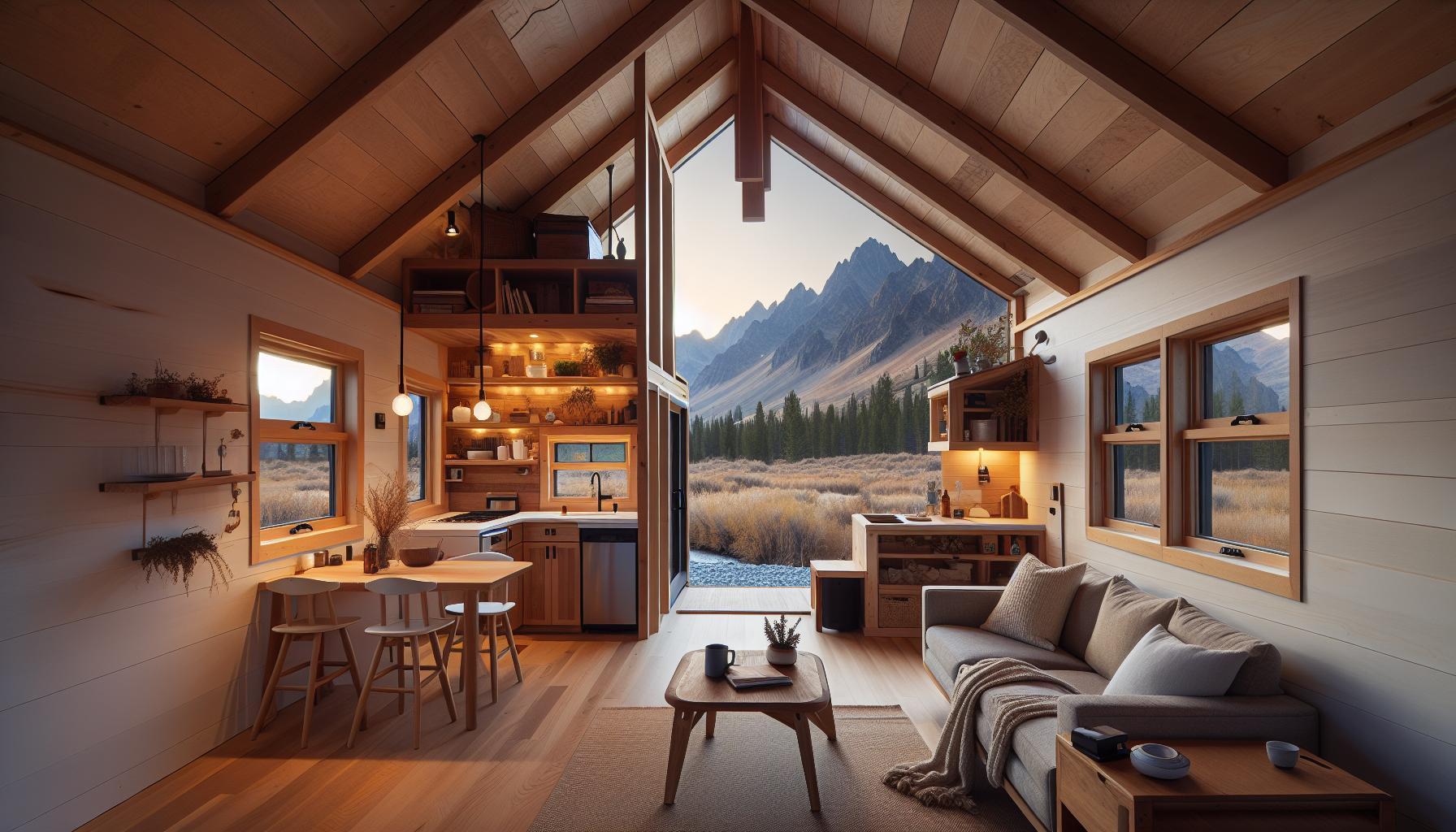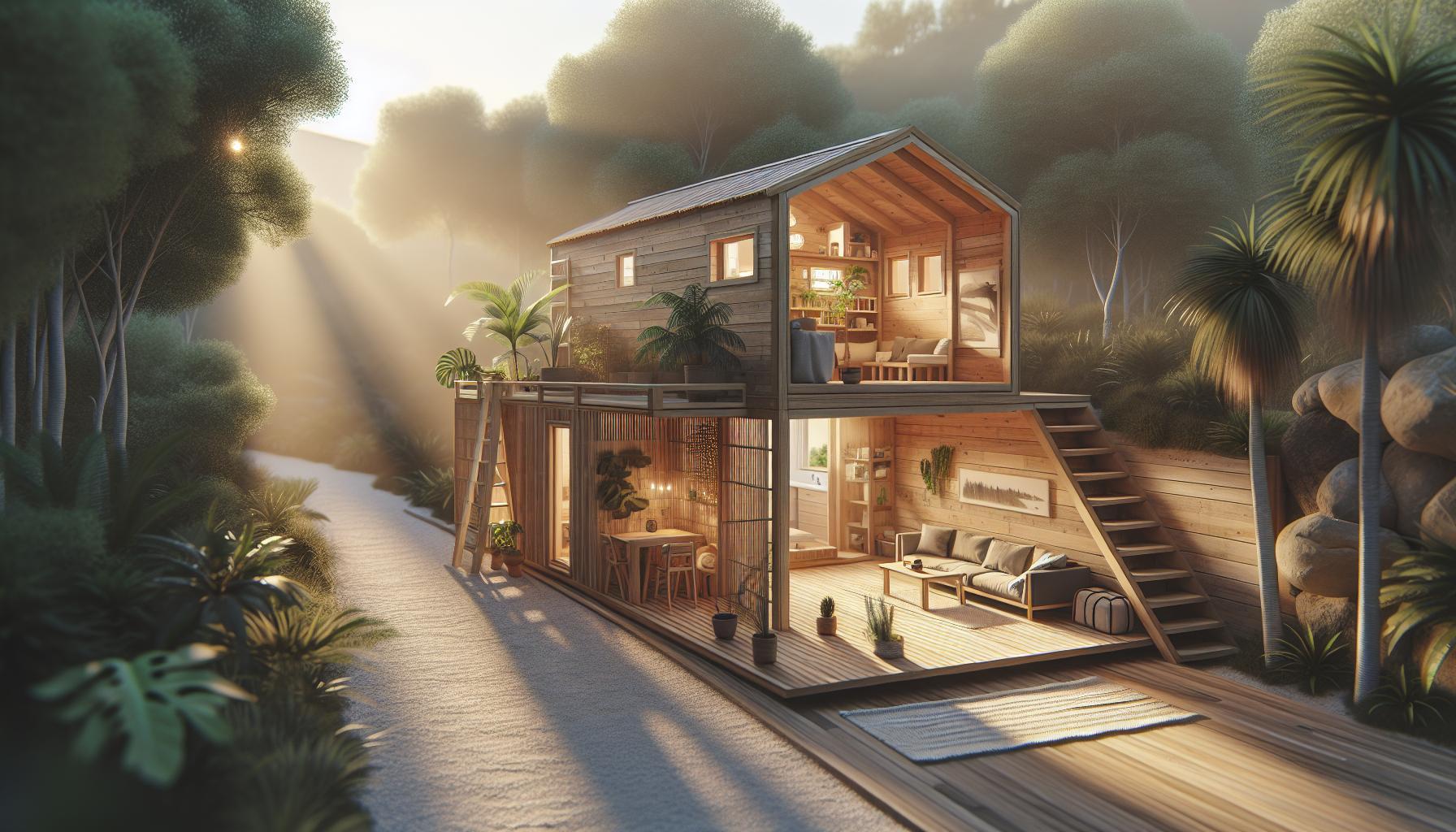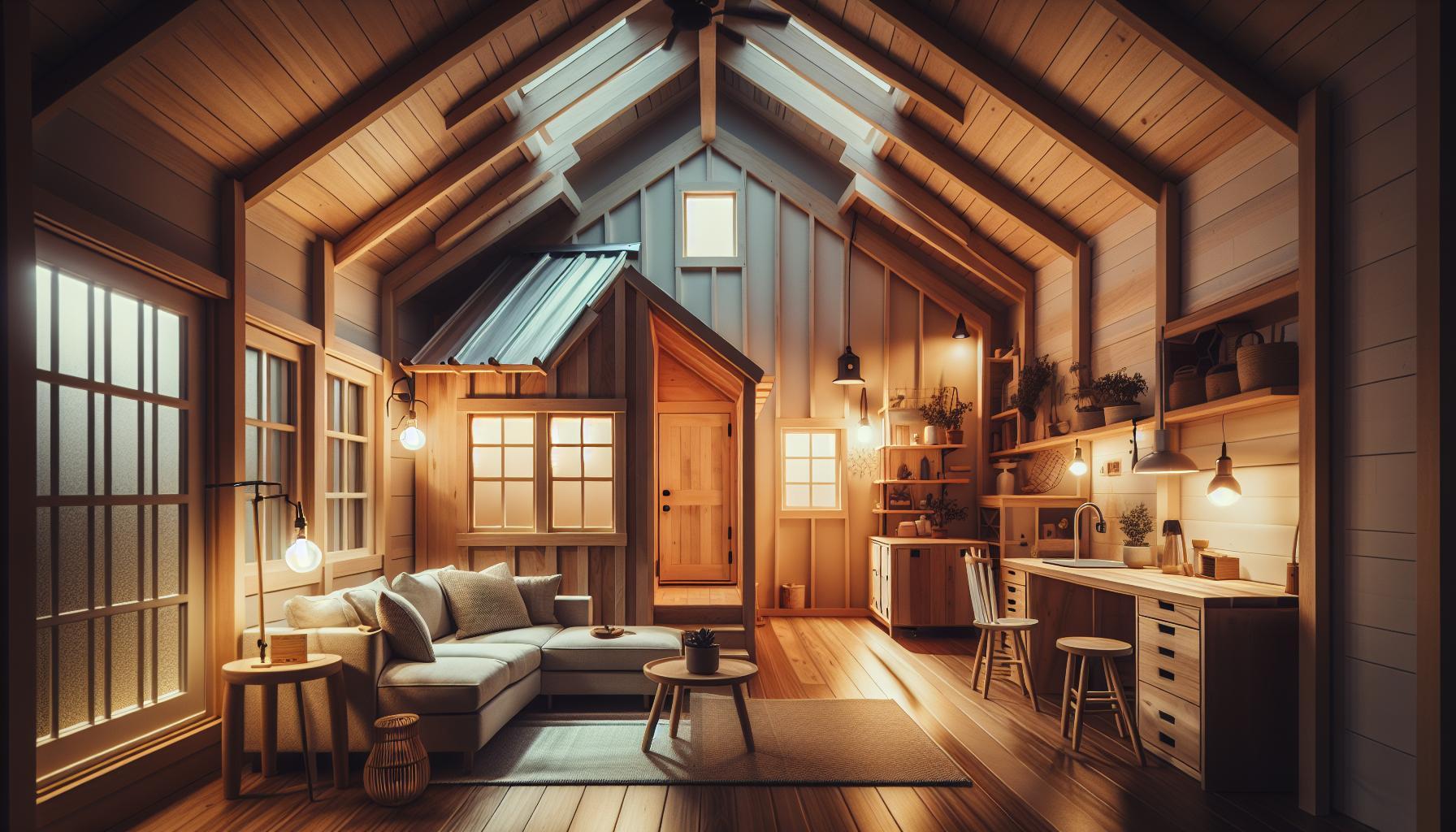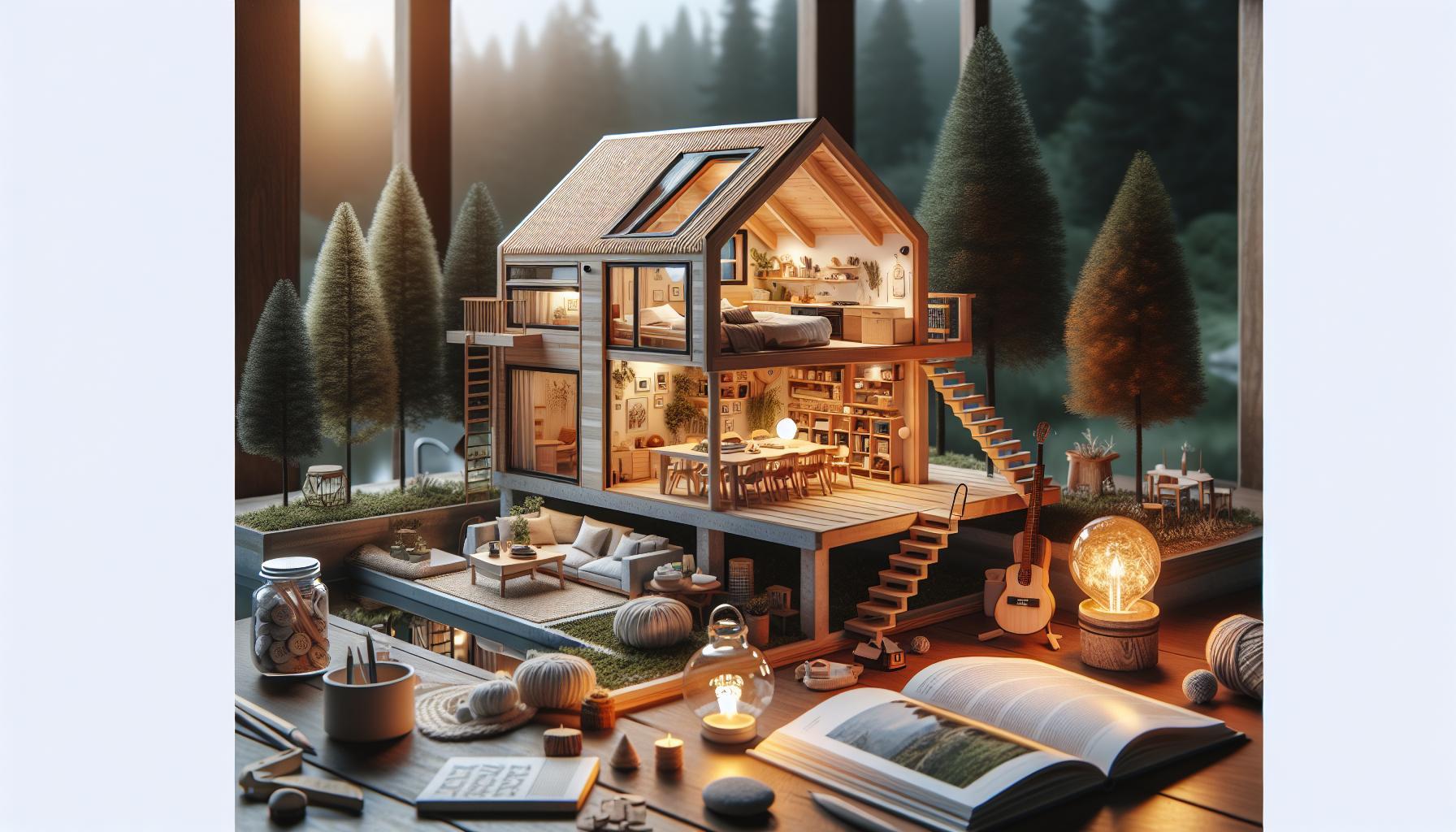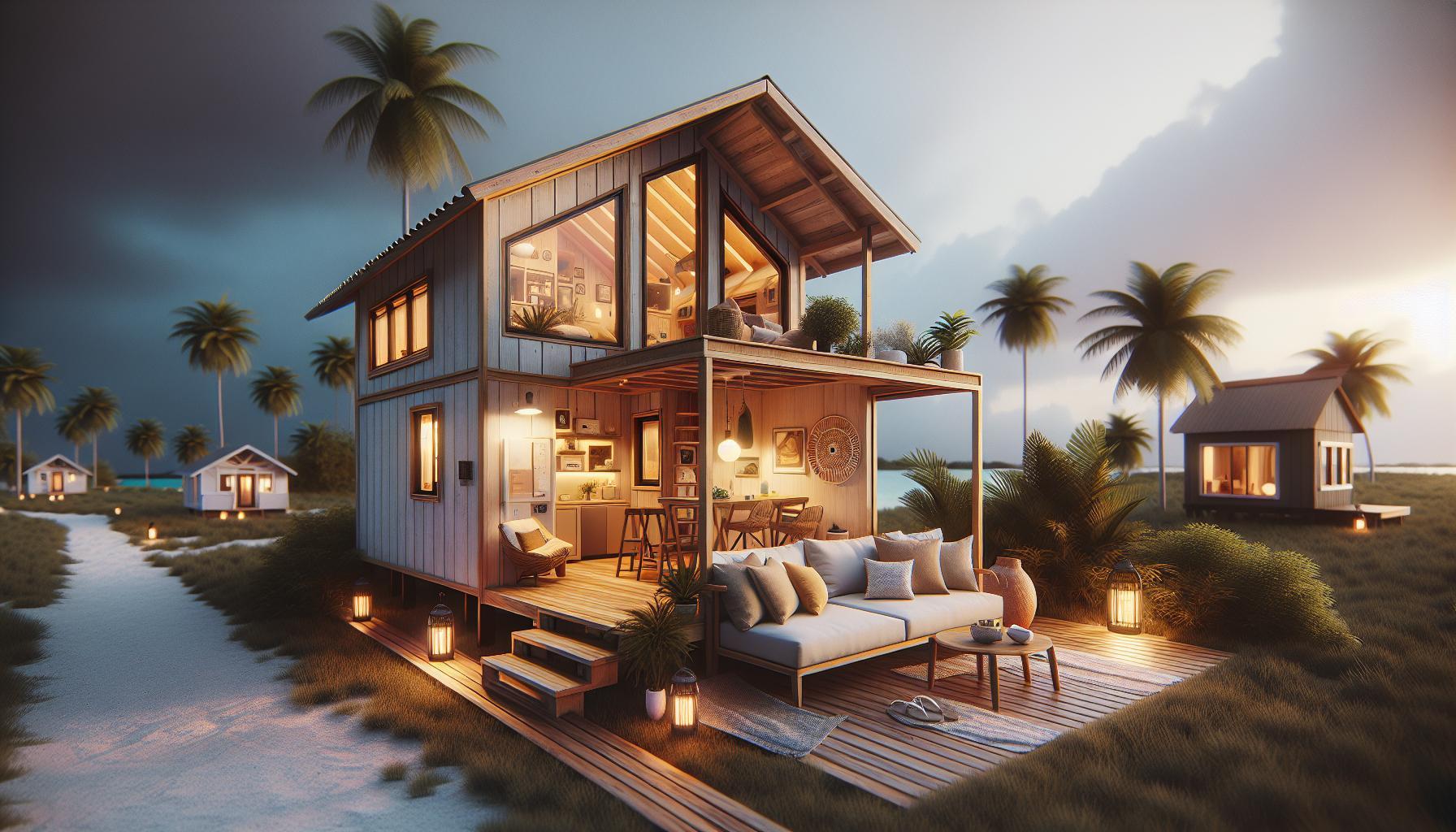Navigating the complexities of building a tiny home can be daunting, especially in a state like Idaho where zoning laws vary widely. Understanding these regulations is crucial for prospective homeowners looking to embrace minimalist living. This guide simplifies the process, ensuring you align your tiny house dreams with local zoning requirements for a smoother building experience.
Understanding Idaho’s Zoning Laws for Tiny Houses
Navigating the intricacies of zoning laws in Idaho is crucial for anyone considering building a tiny home. In recent years, the topic of tiny house construction has gained momentum, especially as communities look for enduring and affordable housing solutions. Understanding how Idaho’s zoning regulations apply to tiny houses can make a important difference in the success of your project.
The legal landscape for tiny homes in Idaho varies by city and county, largely because each local government has its own progress codes. For instance, the City of Hailey introduced an ordinance specifically allowing tiny homes on wheels as an acceptable housing option as of February 13, 2023. This progressive step opens possibilities for those seeking to establish mobile, flexible living arrangements without running afoul of local laws [[1]]. Conversely, the City of Boise requires that tiny houses adhere to the One-and-Two-Family Dwelling Building Code unless exceptions allow otherwise under Appendix Q. These distinctions underscore the importance of consulting local zoning authorities before proceeding with plans [[3]].
When contemplating the construction of a tiny home in Idaho, prospective owners should also consider the necessity of titling and registration. For a tiny home to be legally titled and registered, it must meet definitions as a vehicle. This is particularly relevant for tiny homes on wheels, which are categorized similarly to RVs in terms of regulatory compliance [[2]]. This process not only ensures legal recognition but can also influence insurance requirements and financing options.
understanding local zoning laws is an essential first step in building a tiny house in Idaho. Prospective builders should actively engage with local regulations, seek necessary permits, and verify the classification of their tiny homes. this proactive approach can definitely help mitigate future complications and align your dream of tiny living with Idaho’s regulatory framework.
Key Considerations for Site Selection in Rural Idaho
Choosing the right site for building a tiny house in rural Idaho involves careful consideration of various factors that can affect your living experience. With breathtaking vistas and a growing community of tiny house enthusiasts, it’s essential to navigate the practical and regulatory aspects that come with constructing a smaller dwelling. Rural Idaho presents unique opportunities, but potential builders must be aware of zoning laws and land use regulations to ensure a smooth process.
Understanding zoning Regulations
Before making any decisions, familiarize yourself with local zoning ordinances, which can vary considerably from one area to another. Many rural counties in Idaho have their own regulations about the minimum size of homes, the types of structures allowed, and land use designations. Reviewing the Mountain State Zoning Guide can provide essential insights into what is permissible in your desired location. Here are a few critical points to consider:
- Minimum Square Footage: Check if there are regulations regarding the minimum size for residential structures,as some areas may require at least 600 square feet.
- Setback Requirements: Understand how far your tiny house must be from property lines and roads, which is crucial for building compliance.
- Land Use Designation: Identify whether the property is zoned for residential use; areas zoned for commercial or agricultural use may not permit tiny houses.
Access to Utilities and Infrastructure
Another key consideration is the availability of utilities such as water, electricity, and sewage systems. While rural Idaho offers serene landscapes, it may also mean limited access to municipal services. Be prepared to consider self-sufficient options, including:
- Water Source: Investigate whether you will need to drill a well or have access to a community water supply.
- Waste Management: Understand options for waste disposal, such as installing a septic system if municipal connections are unavailable.
- Power Sources: Explore renewable energy solutions, like solar panels, especially if grid access is limited.
Community and Lifestyle
When selecting a site, think about the lifestyle you wish to achieve in your new tiny home. Rural Idaho offers a diverse range of communities, each with its own culture and amenities. Conduct research on nearby towns to find one that aligns with your needs:
- Proximity to Services: Consider how far you will be from grocery stores, medical facilities, and other essential services.
- Recreation Opportunities: Examine the availability of outdoor activities that match your interests, such as hiking, fishing, or winter sports.
- Community Engagement: Connecting with local groups, such as tiny house communities, can provide support and resources for navigating your building journey.
By addressing these key aspects,from understanding zoning laws to assessing community resources,you can ensure that your decision to build a tiny house in rural Idaho is both informed and fulfilling. Whether you seek solitude in nature or wish to immerse yourself in a vibrant local culture, planning ahead will help optimize your building experience and subsequent lifestyle.
Navigating Building Codes and Permits in the Mountain State
Building a tiny house in Idaho can be an exciting venture, but it also presents unique challenges, especially when it comes to understanding and navigating the local building codes and permits. Idaho’s mountainous terrain and diverse communities mean that regulations can vary significantly between municipalities, impacting everything from design requirements to the types of foundations that are permissible. Knowing where to start and how to ensure compliance with your city’s specific requirements is crucial for a successful project.
Understanding Local Regulations
Before beginning your tiny house project, familiarize yourself with the current building codes. In Boise, as an example, the city has adopted updated building codes that apply to all projects submitted post-January 1, 2021. these codes outline essential standards, including safety regulations and energy efficiency benchmarks, that must be met to obtain building permits. You can find a comprehensive list of these codes thru the City of Boise’s Planning and Development Services website, making it a vital resource for anyone looking to build in the area [[1]].
Applying for Permits
Acquiring the necessary permits is a critical step in your construction journey. In Idaho, the Division of Occupational and Professional Licenses (DOPL) oversees building permits and plan reviews. Their website provides detailed information on the application process, including the types of applications you may need, such as the Building Plan Review Application and the Building Permit Application. These applications will often require you to submit detailed plans and specifications for your tiny house to ensure compliance with state regulations [[3]].
Steps for a Smooth Application Process:
- Review the local building codes for your specific area.
- Prepare detailed plans that adhere to these codes.
- Submit your plans along with the necessary applications and fees.
- Schedule inspections at key stages of your building process.
common Pitfalls to Avoid
One of the most common mistakes when building a tiny house is underestimating the importance of zoning laws. Each locality may have different zoning classifications that dictate where tiny homes can be built, whether on a permanent or temporary basis. Be sure to check with city planning departments early in the process. In addition, maintaining open dialog with local officials can help you navigate potential challenges more effectively, ensuring that you stay compliant throughout your building journey.
Understanding the path to constructing a tiny house in Idaho requires diligence, but by leveraging available resources and adhering to local regulations, aspiring builders can transform their vision into reality. whether you’re nestled in the breathtaking mountain vistas or within one of Idaho’s thriving communities, a well-planned approach will help pave the way for your tiny living dreams.
The Impact of Land Use regulations on Tiny House Projects
Building a tiny house is often seen as a pathway to affordable living, but land use regulations can significantly influence the feasibility of such projects. Understanding the intricate web of zoning laws and building codes is vital for anyone considering this minimalist lifestyle, especially in a state like Idaho. Various factors come into play, including local government policies, community ordinances, and the specifics of the land being considered for development.
Key considerations in Land Use Regulations
Before embarking on a tiny house project, it’s essential to identify the zoning classification of the land. Idaho’s zoning laws may define areas suitable for tiny homes as either residential or recreational, which can dictate size, design, and occupancy restrictions. Key considerations include:
- Minimum Lot Sizes: Many regions impose minimum lot size requirements that could restrict where you can place a tiny home.
- Setback Requirements: Zoning regulations often specify how far structures must be from property lines, which impacts the layout of your home.
- Type of Dwelling: Tiny homes may be classified differently based on whether they are on wheels (like RVs) or built on a permanent foundation.
Variances and Exceptions
In some cases, obtaining a variance may be necessary if your tiny house project does not meet the existing land use regulations.This process can be complex and frequently enough requires demonstrating unique circumstances that justify the deviation from standard rules. Real-world examples include homeowners who successfully petitioned local councils for exceptions on setback regulations, enabling them to fit their tiny homes on smaller plots than normally permitted.
Researching Local Ordinances
Proactive research is key to navigating Idaho’s zoning landscape effectively. Potential builders should engage with local planning departments to clarify regulations before purchasing land or starting construction. Consulting resources such as local zoning maps and building departments can provide insights into what is permissible in your desired area.
The nuances of these regulations underscore the importance of the detailed guidance available in resources like the “Can You Build a Tiny House in Idaho: Mountain State Zoning Guide.” Utilizing such information can streamline the planning process, ensuring that tiny house enthusiasts can turn their dreams into reality without unnecessary legal headaches.
Addressing Utility Access and Sustainability in Small Spaces
Addressing utility access in small spaces, particularly when considering tiny houses, is an increasingly relevant topic, especially as communities strive for sustainable living solutions. Tiny homes often face unique challenges in ensuring that essential utilities—water, electricity, and sewage—are both accessible and sustainable. This is a crucial aspect for anyone referencing guides like the one on building a tiny house in Idaho, as local regulations often dictate how these utilities are integrated.
One significant aspect of making tiny homes sustainable involves the choice of building materials and utility provisions. Many utility companies are now incorporating environmental,social,and governance (ESG) practices,which can positively impact tiny house projects. Such as,using long-lasting,eco-amiable materials can reduce waste and improve the overall ecological footprint of a tiny home. homeowners should seek out local utility providers that support sustainability initiatives, as these providers may offer incentives or streamlined processes for connecting utilities that align with best practices in sustainability [[3]](https://www.mcwanepoles.com/learning-center/blog/5-best-practices-for-esg-in-utility-grids/).
Proper planning can also lead to improved utility integration, particularly in small or urban spaces. For instance, the undergrounding of utilities not only enhances the aesthetic appeal of neighborhoods but also lowers maintenance costs and improves safety. Communities that prioritize underground utility systems can make tiny living even more feasible, reducing the visual clutter of overhead lines and providing a cleaner environment for residents. Identifying local infrastructure plans can be vital for tiny house builders looking to navigate these challenges effectively [[2]](https://www.scenic.org/2024/04/24/promoting-sustainability-through-utilities-undergrounding/).
Incorporating renewable energy sources is another compelling strategy. For many tiny house owners, solar panels are an attractive option. Not only do these systems help reduce dependence on traditional utility grids, but they can also drastically lower energy costs. When exploring the feasibility of tiny homes, individuals should thoroughly investigate how local zoning laws interact with the installation of renewable energy technologies, ensuring these options are permissible within their chosen area.To summarize, addressing utility access and sustainability in small living spaces such as tiny houses requires thoughtful consideration of resources, materials, and regulations. By leveraging advancements in utility practices, engaging with local infrastructure initiatives, and integrating renewable technologies, prospective tiny home builders can create sustainable living environments that honor both their space and the community at large.
Finding the Right Tiny House Community in Idaho
Finding a supportive and lively community is crucial for anyone considering the tiny house lifestyle in Idaho. With its stunning natural landscapes and a growing number of like-minded individuals, Idaho presents an appealing option for those wanting to downsize not just their homes, but also their environmental footprint. embracing tiny living often means finding a community that shares your values, whether they be sustainability, minimalism, or simple living.
When searching for the right tiny house community, it’s essential to consider a few key factors:
location
The geographical setting can greatly affect your quality of life.Consider areas near Boise, which are popular due to their access to urban amenities combined with outdoor activities. Tiny house communities near lakes, rivers, or mountains can enhance your lifestyle, providing ample opportunities for recreation and connection with nature.
Zoning Regulations
Understanding the local zoning laws and regulations is paramount. The article on tiny homes in Idaho emphasizes the importance of adhering to these guidelines to avoid fines or penalties. Various counties may have different rules, so it’s advisable to research specific areas:
- Does the community allow tiny houses on wheels?
- What are the minimum lot sizes?
- Are there restrictions on utilities and building materials?
Community Amenities
Evaluate the amenities that potential communities offer. Some may provide shared gardens, community workshops, or social events that help foster a sense of belonging. These amenities can enhance your living experience and provide support as you adjust to tiny living.
Engagement and Support
Engage with existing community members online before making a decision. Many Idaho tiny house communities are active on platforms such as Facebook or dedicated websites. Participating in local meet-ups or forums can provide valuable insights, connections, and the opportunity to align with a group that resonates with your lifestyle goals.
By navigating these considerations thoughtfully,you’ll find a tiny house community in idaho that not only meets your housing needs but also enriches your overall living experience. In turn, the journey to minimalism can become a shared adventure with those who appreciate the value of simpler living, as highlighted in “Can You Build a Tiny House in Idaho: Mountain State Zoning Guide.” Whether you seek solitude or camaraderie, the right community awaits.
Tips for Overcoming Common Challenges in Tiny home Construction
Navigating the intricate landscape of tiny home construction can frequently enough feel overwhelming, especially when you consider the unique challenges posed by zoning laws and building codes. When embarking on the journey of creating a tiny home, particularly in places like Idaho, understanding these regulations is critical to ensuring your project not only gets off the ground but also remains compliant and safe.
Research Local Regulations
Before you start building, it’s essential to conduct thorough research on local zoning regulations and building codes. Each municipality in Idaho may have different requirements concerning tiny homes, such as minimum square footage, types of foundations allowed, and sanitation standards. Websites for local county planning departments often provide guidelines, but engaging with a local attorney specializing in real estate can clarify any ambiguities. Additionally,joining local tiny home communities can offer invaluable insider knowledge and support.
Plan for Mobility
If you’re considering a tiny house on wheels, you might have more flexibility regarding regulations. While this can simplify certain zoning issues, it may introduce different challenges related to vehicle registration and road use. To maximize your chances of compliance, ensure that your tiny home meets state vehicle standards and prepare for potential inspections. Having a solid, portable foundation will not only offer mobility but also serve as an attractive feature when navigating legal frameworks.
Be Prepared for Inspections
Acknowledging the possibility of inspections is another crucial step in overcoming construction hurdles. Many jurisdictions require periodic inspections to ensure compliance with building codes throughout the construction process. To facilitate a smoother inspection, consider hiring a educated contractor who specializes in tiny homes. They can help preemptively address common issues that inspectors might flag,such as structural integrity,ventilation,and waste management.
Utilize Resources and Networks
Utilizing resources such as tiny home builders’ associations can help you stay updated on best practices and new trends in construction. These networks often provide educational resources, workshops, and forums for advice. You can learn from the experiences of others who have navigated similar challenges, making it easier to anticipate and overcome potential roadblocks.
building a tiny home in Idaho, as addressed in the “Can You Build a Tiny House in Idaho: Mountain State Zoning guide,” requires strategic planning, a solid understanding of local laws, and community support. By proactively addressing these challenges, you position your tiny home project for success, ensuring it meets your personal vision while adhering to necessary regulations.
Embracing Minimalist Living: A Guide to Designing Your Tiny House
Embracing a minimalist lifestyle offers a transformative approach to living, especially when it involves designing your own tiny house. This movement encourages not just a reduction in physical possessions but also a shift in mindset towards sustainable living and personal satisfaction. For those considering the journey of building a tiny house—such as referenced in the insights provided by the article on zoning regulations in Idaho—it’s crucial to understand how to optimize your space effectively while adhering to local guidelines.
Basic Principles of Tiny House Design
When you embark on the venture of designing a tiny house, keep in mind several fundamental principles that will help maximize your living space:
- Functionality: Every square foot counts in a tiny house. Incorporate multi-functional furniture, such as a fold-out table or a sofa bed, to make the most of limited space.
- Natural Light: Design large windows and consider skylights to create an open, airy feel, which can significantly enhance your living experience and reduce the need for artificial lighting.
- Simplistic Aesthetics: Choose a minimalistic design that reflects tranquility and order. Neutral colors and simple lines can make your tiny home feel larger and more inviting.
Utilizing Vertical Space
Another effective strategy for tiny house design is leveraging vertical space. In places where footprint constraints exist, like many areas of Idaho, it’s beneficial to think upwards. Incorporate shelving units that reach the ceiling, which not only serves as storage but also creates a sense of height within your home.
| Space-Optimizing Ideas | Description |
|---|---|
| Lofted Beds | Free up floor space while creating a cozy sleeping area above the living space. |
| Built-In Storage | Integrate storage solutions into staircases or seating to minimize clutter. |
| Modular Furniture | Use pieces that can be rearranged or repurposed to fit different needs. |
Understanding Zoning Regulations
In the context of building a tiny house, particularly as explored in the Idaho zoning guide, understanding local regulations is paramount. Before you start your design, research zoning laws that could impact your construction, such as setback requirements, permits for utilities, and any restrictions on temporary vs. permanent structures. This information is crucial to ensure compliance and to avoid potential roadblocks during your building process. By merging practical design strategies with a clear understanding of local regulations, you can create a tiny home that truly reflects your minimalist values while being wholly legal and functional.
Q&A
Can I build a tiny house in Idaho?
yes,you can build a tiny house in Idaho! Tiny homes are allowed provided that they are 400 square feet or less in floor area,excluding lofts.
In Idaho, tiny homes must meet specific regulations, including a ceiling height requirement and loft specifications. Local zoning laws may vary, so it’s essential to consult your city or county’s building department before starting your project. For more insights,see the complete guide.
What are the regulations for tiny homes in Idaho?
Tiny homes in Idaho must adhere to regulations set by the local building department. Key requirements include being 400 square feet or less.
Besides size, tiny homes must have lofts that are at least 30 inches above the main floor and a ceiling height no lower than 6 feet 8 inches. Always check local zoning regulations for any additional requirements specific to your area.
How do I find zoning information for tiny houses in Idaho?
To find zoning information for tiny houses in Idaho, contact your local city or county building department.
Each locality may have different zoning ordinances, so it’s vital to verify the rules in your specific area. Some cities, like Hailey, classify tiny homes on wheels as accessory structures, which may have different guidelines. For comprehensive details, review your county’s zoning ordinances.
Can I place a tiny house on wheels in Idaho?
Yes, tiny houses on wheels (THOW) can be placed in Idaho, but local regulations apply.
In some areas, such as Hailey, THOWs are recognized as accessory structures with specific limitations. Ensure you understand local guidelines and obtain any necessary permits before parking your tiny home on wheels.
why choose a tiny house in Idaho?
Choosing a tiny house in Idaho offers numerous benefits, including affordability, sustainability, and minimal environmental impact.
With Idaho’s stunning landscapes, tiny living allows you to embrace a lifestyle that supports outdoor activities and a connection to nature. Additionally, smaller spaces promote downsizing and minimalist living, appealing to those seeking a simpler life.
What is the ceiling height requirement for tiny homes in Idaho?
Tiny homes in Idaho must have a minimum ceiling height of 6 feet 8 inches.
This requirement ensures safety and comfort within the living space. Compliance with this regulation is critical when designing your tiny home, as it impacts the overall aesthetics and functionality of the space.
Are there any special permits required for building a tiny house in Idaho?
Yes, building a tiny house in Idaho may require special permits depending on local regulations.
Permitting can include building permits, zoning approvals, and possibly additional inspections. Always check with your local building department to understand the specific requirements for your area. This helps ensure a smooth building process and compliance with all legal standards.
key Takeaways
building a tiny house in Idaho is not just a feasible option; it’s an exciting journey into the world of minimalist living that offers both freedom and community. Understanding local zoning regulations is crucial, as tiny homes must adhere to specific standards — typically defined as being 400 square feet or less for the living space. Additionally, unique approaches like placing a tiny home on a foundation or using option living arrangements can open up more possibilities. As you embark on this adventure, embrace the challenges of planning and legal compliance with enthusiasm, knowing that each step brings you closer to your ideal lifestyle.
Remember, the tiny house movement isn’t just about downsizing; it’s about simplifying life, reducing environmental impact, and fostering connections with like-minded individuals. For those intrigued by this lifestyle, continued exploration into local regulations, innovative designs, and the vibrant tiny home community in Idaho can inspire your next steps. So, dive deeper into the resources available, connect with fellow enthusiasts, and start envisioning the tiny home that reflects your unique aspirations while comfortably fitting into Idaho’s diverse landscape.

